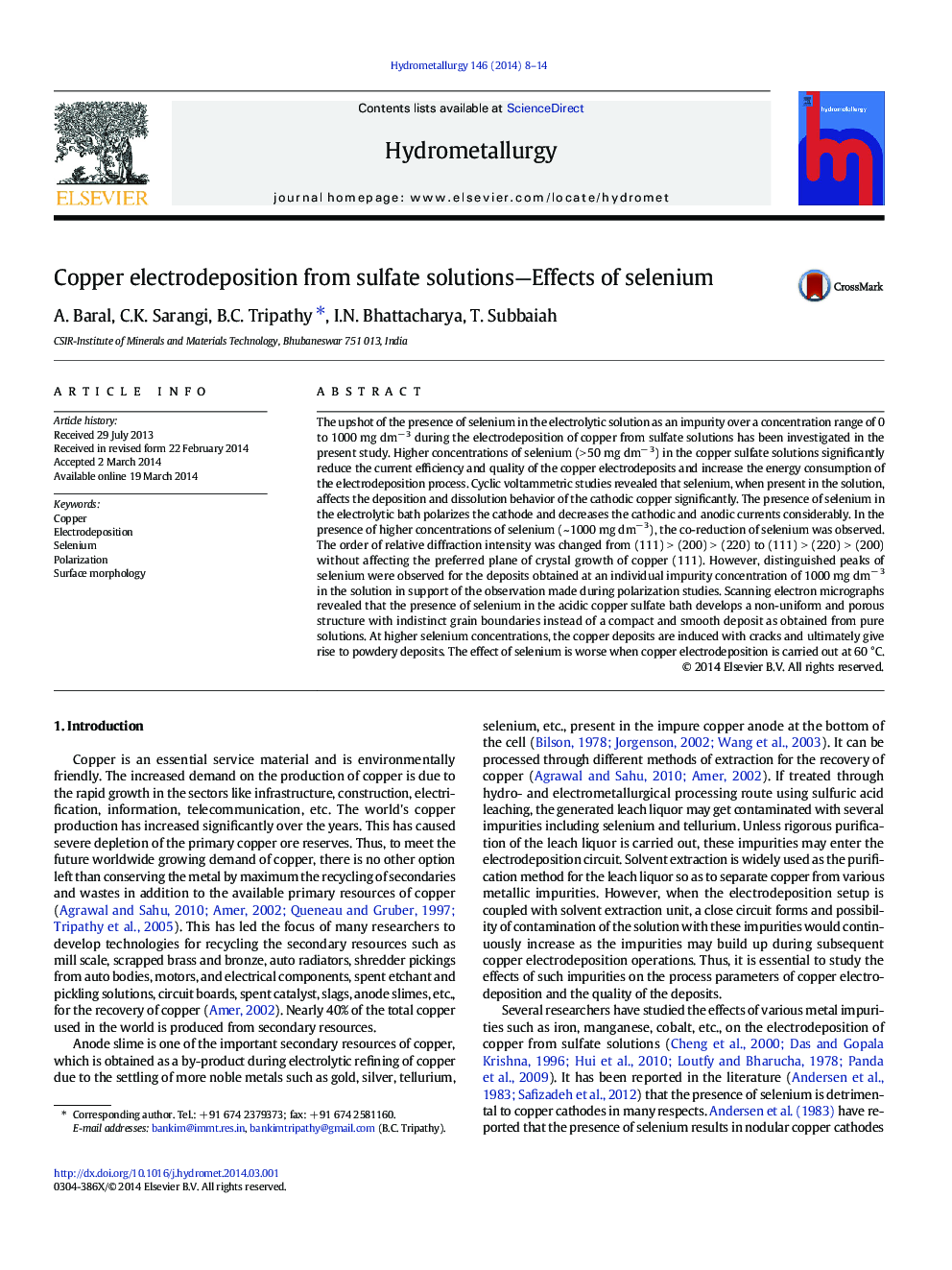| Article ID | Journal | Published Year | Pages | File Type |
|---|---|---|---|---|
| 212123 | Hydrometallurgy | 2014 | 7 Pages |
•The presence of selenium in the copper electrolyte reduces CE and increases EC.•Selenium affects the current–voltage profiles significantly.•Selenium results in a non-uniform and porous copper electrodeposits.•At high concentrations, selenium co-deposits with copper as a blackish mass.•The effect of Se is worse when electrodeposition is carried out at 60 °C.
The upshot of the presence of selenium in the electrolytic solution as an impurity over a concentration range of 0 to 1000 mg dm− 3 during the electrodeposition of copper from sulfate solutions has been investigated in the present study. Higher concentrations of selenium (> 50 mg dm− 3) in the copper sulfate solutions significantly reduce the current efficiency and quality of the copper electrodeposits and increase the energy consumption of the electrodeposition process. Cyclic voltammetric studies revealed that selenium, when present in the solution, affects the deposition and dissolution behavior of the cathodic copper significantly. The presence of selenium in the electrolytic bath polarizes the cathode and decreases the cathodic and anodic currents considerably. In the presence of higher concentrations of selenium (~ 1000 mg dm− 3), the co-reduction of selenium was observed. The order of relative diffraction intensity was changed from (111) > (200) > (220) to (111) > (220) > (200) without affecting the preferred plane of crystal growth of copper (111). However, distinguished peaks of selenium were observed for the deposits obtained at an individual impurity concentration of 1000 mg dm− 3 in the solution in support of the observation made during polarization studies. Scanning electron micrographs revealed that the presence of selenium in the acidic copper sulfate bath develops a non-uniform and porous structure with indistinct grain boundaries instead of a compact and smooth deposit as obtained from pure solutions. At higher selenium concentrations, the copper deposits are induced with cracks and ultimately give rise to powdery deposits. The effect of selenium is worse when copper electrodeposition is carried out at 60 °C.
Graphical abstractFigure optionsDownload full-size imageDownload as PowerPoint slide
